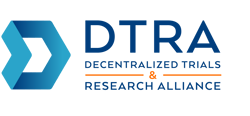Data Flow Planning
The purpose of the Data Flow Design stop is to create a data flow map detailing what information is generated, by whom, using what, where is it captured, who transforms it, where is it stored, and how is it accessed for analysis.
Description
A clinical trial data flow map is a visual representation of the flow of data through a clinical trial. It can be used to track the movement of data from its source to its destination, and to identify potential bottlenecks or areas of risk.
A clinical trial data flow map can be created using a variety of tools, including process mapping software. The map should include the following elements:
Data sources: The data sources for the clinical trial, such as electronic health records, patient-reported outcomes, and laboratory tests.
Data collection methods: The methods used to collect data from the data sources, such as electronic data capture (EDC) systems, manual data entry, and remote monitoring.
Data storage: The location where the data is stored, such as a cloud-based database or a local server.
Data analysis: The methods used to analyze the data, such as statistical analysis and machine learning.
Data reporting: The methods used to report the data to stakeholders, such as clinical trial investigators, regulatory agencies, and the public.Data reporting: The methods used to report the data to stakeholders, such as clinical trial investigators, regulatory agencies, and the public.
DCT-specific Considerations/Inputs
What data needs to be captured to support the clinical trials
What data privacy issues need to be considered and addressed?
Collaborate on Regulatory Gaps
Per FDA Draft guidance: Section 3D: To account for multiple sources of data collection in a DCT, the sponsor should include at least the following in a data management plan (DMP):
- Data origin and data flow from all sources to the sponsor (see section III.I) (e.g., a diagram that depicts the flow of data from creation to final storage)
- Methods used for remote data acquisition from trial participants, trial personnel, and contracted service providers (e.g., local clinical laboratory facilities and local HCPs who perform trial-related activities)
- A list identifying vendors for data collection, handling, and management
Regulatory Documents
FDA/U.S.
Europe/EMA
Reference Documents
ACRO Decentralized Clinical Trials Data Flow Maps
ViewTransCelerate : Modernization of Statistical Analytics Solutions
ViewJMIR - Investigator Experiences Using Mobile Technologies in Clinical Research: Qualitative Descriptive Study
ViewMRCT IRB/EC Considerations - Full Document
ViewMRCT IRB/EC Considerations - Devices
ViewMRCT IRB/EC Considerations - Connected Sensors
ViewMRCT IRB/EC Considerations - Remote Visits
ViewMRCT IRB/EC Considerations - Real-time Data Monitoring
ViewCTTI Considerations for Advancing the Use of Digital Technologies for Data Capture & Improved Clinical Trials
ViewNIH - Informed Consent for Research Using Digital Health Technologies
View